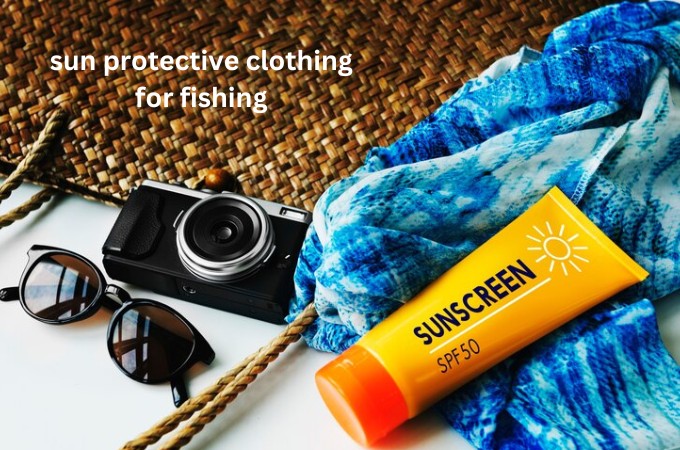Are Crayfish a Good Walleye Bait? (Complete Breakdown)
Today we discuss Are Crayfish a Good Walleye Bait. When it comes to walleye fishing, choosing the right bait can significantly impact your success on the water. One popular bait option that often comes up in discussions is crayfish.
But are crayfish a good bait for walleye? In this comprehensive breakdown, we will explore the advantages and disadvantages of using crayfish as walleye bait.
We will delve into the biology of walleye and crayfish, discuss their natural interactions, and analyze the effectiveness of crayfish as a bait option.
By the end of this article, you will have a clear understanding of whether crayfish should be a part of your walleye fishing arsenal.
Are Crayfish a Good Walleye Bait:
Understanding Crayfish:
Crayfish, also called crawfish or crawdads, are small crustaceans that inhabit freshwater bodies such as lakes, rivers, and streams. They have a distinct appearance with a segmented exoskeleton, long antennae, and pincers.
Crayfish are an essential part of the food chain and serve as prey for many freshwater fish species, including walleye. They are omnivorous creatures, feeding on plants, insects, small fish, and even carrion.
Natural Interactions Between Walleye and Crayfish
In their natural habitat, walleye and crayfish often cross paths. Walleye are opportunistic predators that feed on various prey items depending on availability and preference.
Crayfish make up a significant portion of their diet, especially in areas where crayfish populations are abundant. The interaction between these two species is not limited to predation alone but also encompasses competition for resources and territorial behavior.
Advantages of Using Crayfish as Walleye Bait:
Now let’s explore the advantages of using crayfish as bait when targeting walleye:
Natural Prey Mimicry:
One of the primary reasons crayfish can be an effective bait for walleye is their ability to mimic the natural prey of walleye.
Since walleye frequently encounter crayfish in their environment, presenting them with a familiar meal can trigger their predatory instinct.
Scent Attraction:
Crayfish produce a distinct scent due to their exoskeleton and pheromones. This scent can be highly attractive to walleye, especially during periods of low visibility or when the fish are actively searching for food.
By using crayfish as bait, you can take advantage of this natural scent attraction to entice walleye into biting.
Versatility:
Crayfish can be used in various fishing techniques and presentations. They can be fished on the bottom using a weighted rig or suspended just above structures using a bobber or float. Crayfish can also be used as trailers on jigs or spinnerbaits, adding an extra level of attraction to your lures.
Disadvantages of Using Crayfish as Walleye Bait:
While crayfish offer several advantages as walleye bait, there are also some drawbacks to consider:
Availability and Cost:
Depending on your location and time of year, obtaining live crayfish for bait may not always be easy or cost-effective. If you don’t have access to live crayfish, you may need to rely on frozen or artificial imitations, which may not be as effective.
Seasonal Variation in Walleye Diet Preferences:
Walleye feeding habits can vary depending on the season and availability of other prey items. While crayfish are a staple in their diet during certain times of the year, walleye may switch their preferences to other food sources such as minnows or insects.
Learning Curve for Proper Presentation:
Using live crayfish as bait requires some skill and knowledge to present them effectively. Properly hooking and rigging live crayfish to maximize their natural movements can be challenging for novice anglers.
Tips for Using Crayfish as Walleye Bait:
To increase your chances of success when using crayfish as walleye bait, consider the following tips:
Selecting the Right Size:
Choose crayfish that closely match the size of the crayfish present in the waters you are fishing. Walleye are more likely to strike at prey that appears natural in size and proportion.
Live Bait vs. Artificial Imitations:
If live crayfish are not readily available, you can use artificial imitations that closely resemble the real thing. These imitations can be made from soft plastics or hard baits designed to mimic the movement and appearance of crayfish.
Properly Presenting Crayfish:
When using live crayfish, it is essential to hook them securely without damaging their vital organs. You can use various rigging methods such as Texas rigging or Carolina rigging to ensure the crayfish remains active and enticing to walleye.
Experiment with Different Techniques:
Don’t be afraid to try different fishing techniques when using crayfish as bait. This can include slow dragging along the bottom, hopping off structures, or twitching near drop-offs. Pay attention to the walleye’s response and adjust your technique accordingly.
Alternatives to Crayfish Bait for Walleye:
While crayfish can be effective bait for walleye, it’s always good to have alternative options in your tackle box. Some popular alternatives include:
- Minnows: Walleye have a natural affinity for minnows, making them an excellent choice for bait.
- Leeches: Leeches provide a tempting target for walleye and can be fished in various ways.
- Nightcrawlers: Nightcrawlers are readily available and attract a wide range of fish species, including walleye.
Conclusion:
crayfish can indeed be a good bait option when targeting walleye. Their natural prey mimicry, scent attraction, and versatility make them appealing to walleye in various conditions. However, it’s essential to consider the availability and cost of live crayfish, seasonal variations in walleye diet preferences, and the learning curve associated with using live bait effectively. By following the tips provided and having alternative bait options available, you can optimize your chances of a successful walleye fishing trip. Happy fishing!

